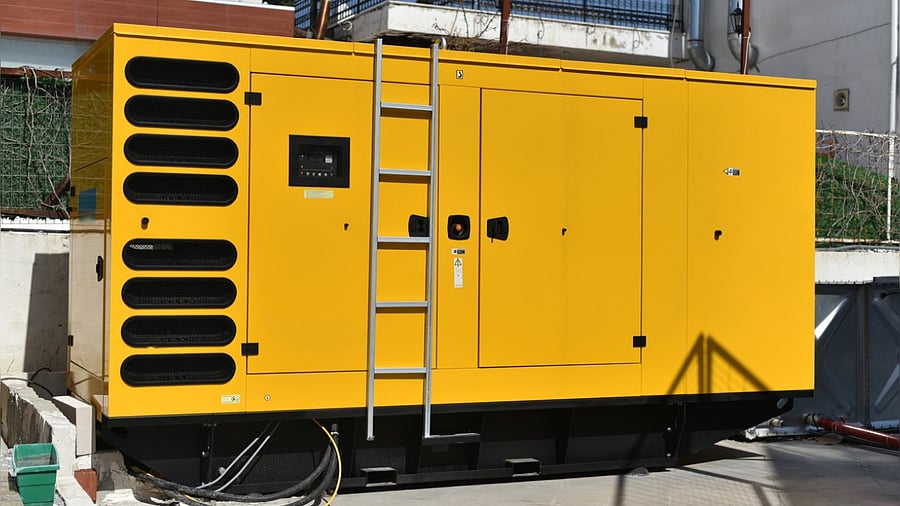
Image of a DG set.
Credit: iStock Photo
Bengaluru: Bengaluru ranks third in India when it comes to emission of harmful particulate matter (PM2.5) from Diesel generator (DG) sets while Patna (Bihar), Gautam Buddha Nagar (UP) take the first two spots.
DG sets have become saviours for industries, commercial and even residential complexes during load shedding, especially in peak hours. However, they emit PM 2.5, PM 10, carbon monoxide and other harmful gases. The demand for DGs is projected to grow at a compound annual growth rate of 8.8 per cent.
Five researchers from the Centre for Study of Science, Technology and Policy (CSTEP) looked into emissions from DG sets and explored cost-effective strategies. The study also recommended alternatives to DG sets along with their emission reduction potentials.
CSTEP purchased DG set data for 200 districts and extrapolated to 537 districts. Accordingly, DG sets in India fall into four categories with a majority (44 per cent) falling in the 76-375 kVA, followed by 376-750 kVA (33 per cent). The 5-75 kVA capacity sets make up 18 per cent of the total while only the large DG sets of above 750 kVA constitute just 5 per cent.
In all, Bengaluru had third highest emissions from DG sets and second highest in the 76-375 kVA category. "Patna, Gautam Buddha Nagar, Bengaluru Urban, Mumbai City and North 24 Parganas (West Bengal) have the highest PM2.5 emissions from almost all categories of DG sets and the highest total PM2.5 emissions from all types of DG sets," the researchers said, after assessing the number of DG sets and their load factor, hours of power cuts and emission factors.
The study noted that while the Central Pollution Control Board has laid down guidelines for the lifespan of a DG set, there was a need to phase out old sets and a policy similar to the one introduced to scrap old vehicles could help.
The researchers made recommendations to cut emissions, starting from retrofitting the existing DG sets with emission control devices to incentivising renewable energy alternatives, especially solar power systems with energy storage, for low and medium load categories.